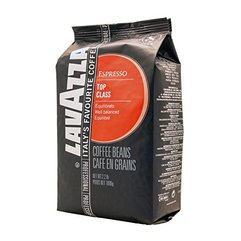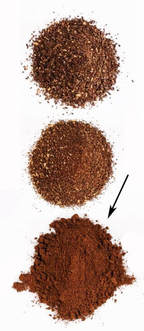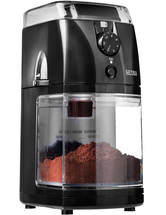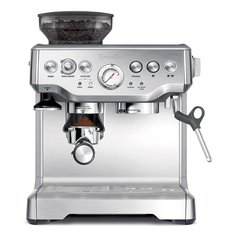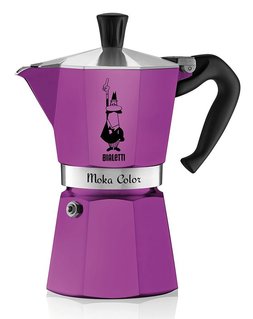The following article, written by Jerry Finzi, appears on GrandVoyageItaly.com.
Water
The basic thing you need for a great espresso is great water. If your water is suspect–tasting too slimy, has an odor, or is off-putting in any way–in the least, use bottled mineral water or get yourself a Brita filter. As a basic test, if you love the refreshing taste of your tap water on a hot summer’s day, then your water should be good to go.
The basic thing you need for a great espresso is great water. If your water is suspect–tasting too slimy, has an odor, or is off-putting in any way–in the least, use bottled mineral water or get yourself a Brita filter. As a basic test, if you love the refreshing taste of your tap water on a hot summer’s day, then your water should be good to go.
The Beans
There is absolutely no difference between a bean labeled as “espresso” or not. Selecting which coffee bean to use for espresso is a personal choice–which means that a world of different tastes are there for the tasting. Espresso is a method of brewing coffee. There are really only two species of coffee beans grown with many varietals (sub-species), and every type is capable of being brewed in different styles–peculator, French drip, espresso, etc.
There is absolutely no difference between a bean labeled as “espresso” or not. Selecting which coffee bean to use for espresso is a personal choice–which means that a world of different tastes are there for the tasting. Espresso is a method of brewing coffee. There are really only two species of coffee beans grown with many varietals (sub-species), and every type is capable of being brewed in different styles–peculator, French drip, espresso, etc.
Remember that beans are roasted before you buy them. Roasters nowadays tend to produce a darker roast to produce more smoky, caramelized sugary flavors–as seen in “Italian roasts”–but a very dark roasted bean can mask the more subtle differences in bean types. Roasters are experimenting with lighter roasts which can enhance the flavor of the coffee’s complexity. Lesson to learn–experiment with both dark and lighter roasts and have fun discovering flavor profiles that you enjoy. Coffee preference is like selecting a wine… One person’s Primativo can be as satisfying as another’s Brunello.
|
The Grind Espresso needs a finer grind than plain-Jane coffee. Typically, most packaged grounds are large grains–about the size of granular sugar. An espresso grind is more like a sticky powder that clumps together when pinched between your fingers. Espresso makers (Moka or machine type) force the water through the grounds under pressure. If the grind is too coarse, the water will pass through too easily with no chance to transfer the flavors. |
Grinder
Beans should be ground using a burr type of grinder (as opposed to a blade type) that can grind finely with many steps of adjustment. Read reviews carefully as some grinder models don’t grind fine enough for espresso. (The affordable Secura burr grinder shown is what we use).
Beans should be ground using a burr type of grinder (as opposed to a blade type) that can grind finely with many steps of adjustment. Read reviews carefully as some grinder models don’t grind fine enough for espresso. (The affordable Secura burr grinder shown is what we use).
Espresso Machines
The best espresso machines should have solid components, create consistent temperatures, are easy to clean, with an easy to understand interface–which is a real task on some of the more complex models. The larger machines come with a built-in grinder to grind exactly the correct amount of beans automatically, a one or two-spouted portafilter with removable basket inserts for either a single or double shot, a self-storing tamper, a milk steamer/foamer, and an espresso cup heater on top.
The best espresso machines should have solid components, create consistent temperatures, are easy to clean, with an easy to understand interface–which is a real task on some of the more complex models. The larger machines come with a built-in grinder to grind exactly the correct amount of beans automatically, a one or two-spouted portafilter with removable basket inserts for either a single or double shot, a self-storing tamper, a milk steamer/foamer, and an espresso cup heater on top.
In our opinion, these are for coffee aficionados that like to turn coffee-making into a theatrical event and if you are prone to buying complex kitchen appliances and then find you use them only once or twice due to their complexities, stay away from these machines. They take dedication and perseverance to master and can be difficult to keep clean. They are also power hogs: from 900-1500 watts, which means you should not be using them on the same circuit as your toaster or microwave. There are simpler–and quicker–ways to make espresso, cappuccino and other coffee beverages.
Moka Pot
Bialetti made the first stovetop espresso maker back in 1933, and are still using the exact same patented moka pot design. In fact, there are many other companies who have copied their iconic design. There have been over 200 million Moka pots sold since the 1950s, mostly in Italy–60 million Italians can’t be wrong. A Moka pot can be found in virtually every Italian households but are gaining popularity all over the world in the last decade or so. The Moka also comes in many different sizes… a tiny one for a single morning espresso shot, or a large one to satisfy a large gathering.It is composed of roughly three components: the base with a pressure valve which holds the water; the basket which holds the coffee; and the “collecting chamber” which the coffee brews into. In between the top and bottom halves are a metal filter and the “O” ring which ensures a pressure seal and to filter the coffee grinds from the coffee produced. The Moka pot boils the water which is forced up through the coffee “puck” and then into the top chamber, creating a foamy crema (head) along with the coffee. The whole process from heating the water to drinking the coffee is about 5-10 minutes, depending on the capacity of your Moka pot.
Bialetti made the first stovetop espresso maker back in 1933, and are still using the exact same patented moka pot design. In fact, there are many other companies who have copied their iconic design. There have been over 200 million Moka pots sold since the 1950s, mostly in Italy–60 million Italians can’t be wrong. A Moka pot can be found in virtually every Italian households but are gaining popularity all over the world in the last decade or so. The Moka also comes in many different sizes… a tiny one for a single morning espresso shot, or a large one to satisfy a large gathering.It is composed of roughly three components: the base with a pressure valve which holds the water; the basket which holds the coffee; and the “collecting chamber” which the coffee brews into. In between the top and bottom halves are a metal filter and the “O” ring which ensures a pressure seal and to filter the coffee grinds from the coffee produced. The Moka pot boils the water which is forced up through the coffee “puck” and then into the top chamber, creating a foamy crema (head) along with the coffee. The whole process from heating the water to drinking the coffee is about 5-10 minutes, depending on the capacity of your Moka pot.
|
Making Capuccino It’s an easy task to make cappuccino by boiling or microwaving milk while you are waiting for your espresso to brew in the Moka. Create the foam from your hot milk with either a battery operated milk foamer (as many Italians use) or a glass pump type foamer. Add the foamy milk to your coffee, grab a couple of biscotti or a sweet pastry and you’ll be having a real colazione(breakfast) the way millions of Italians do each and every day in La Bel Paese… |


